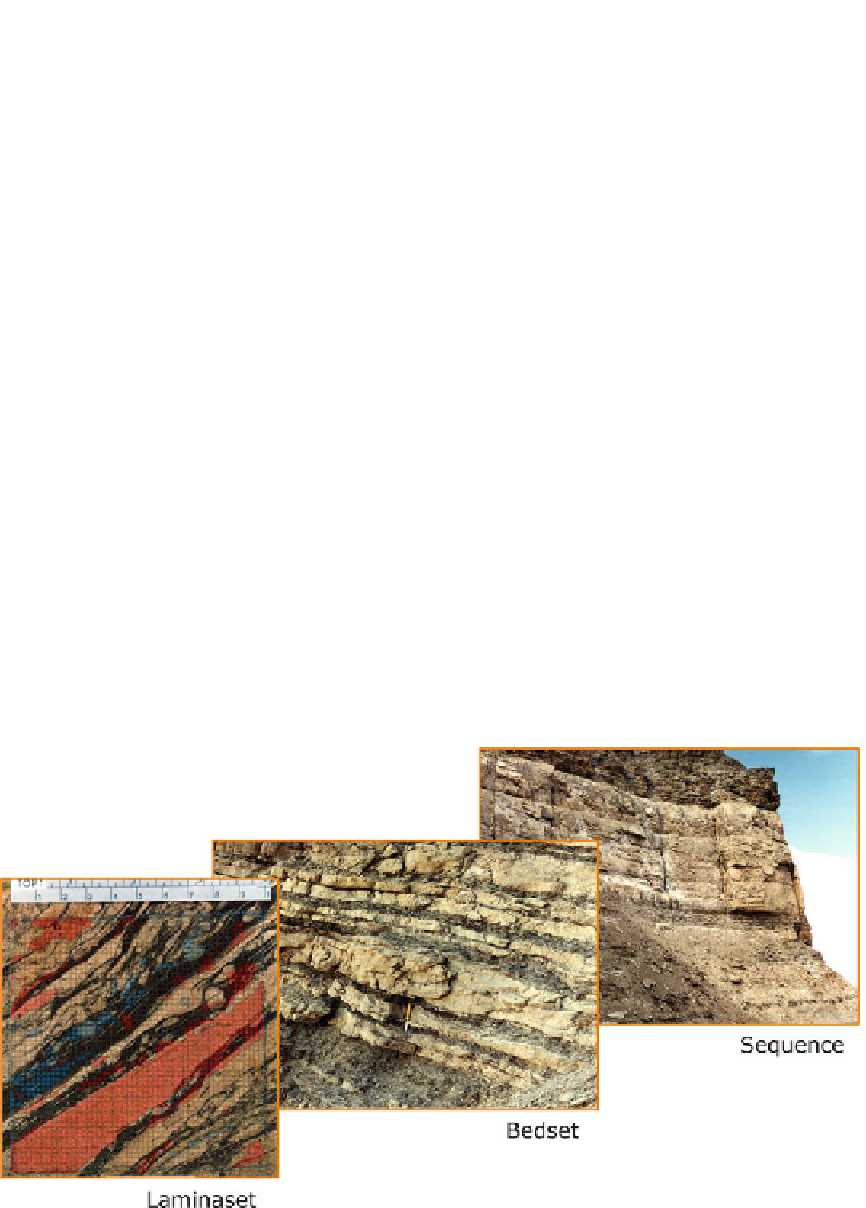Geoscience Reference
In-Depth Information
These four degrees of upscaling complexity
help define the number and dimensions of models
required. The number of scales modelled is typi-
cally related to the complexity and precision of
answer sought. Improved oil recovery (IOR)
strategies and reservoir drainage optimisation
studies are often the reason for starting a multi-
scale approach. A minimum requirement for any
reservoir model is that the assumptions used for
smaller scale processes (pore scale, lithofacies
scale) are explicitly stated.
For example, a typical set of assumptions
commonly used might be:
geological scale, as in the example shown in
Fig.
4.18
.
4.3.3 Which Scales to Focus On?
(The REV)
Geological systems present us with variability at
nearly every scale (Fig.
4.19
). To some extent
they are fractal (Turcotte
1992
), showing similar
variability at all scales. However, geological
systems are more accurately described as
multi-
fractal
- showing some scale-independent
similarities - but dominated by process-controlled
scale-dependent features (e.g. Ringrose
1994
).
However you describe them, geological systems
are complex, and we need an approach for
simplifying that complexity and focussing on the
important features and length-scales.
The Representative Elementary Volume
(REV) concept (Bear
1972
) provides the essen-
tial framework for understanding measurement
scales and geological variability. This concept is
fundamental to the analysis of flow in permeable
media - without a representative pore space we
cannot measure a representative flow property
We assume that two special core analysis
measurements represent all pore-scale physical
flow processes and that all effects of geological
architecture are adequately summarised by the
arithmetic average of the well data.
Assumptions like these are rarely stated
(although often implicitly assumed). More ide-
ally, some form of explicit modelling at each
scale should be performed using 3D multiphase
upscaling methods. At a minimum, it is
recommended to explicitly define pore-scale
and geological-scale models, and to determine a
rationale for associating the pore-scale with the
Fig. 4.19
Multi-scale variability in a heterolithic (tidal
delta) sandstone system: Laminaset scale: Core photo-
graph with measured permeability (
Red
indicates
>
1
Darcy); Bedset scale:
bedsets (hammer for scale); Sequence-stratigraphic
scale: Sand-dominated para-sequence between mudstone
units (Photos A. Martinius/Statoil
#
Statoil ASA,
reproduced with permission)
interbedded sandy and muddy

